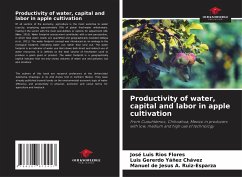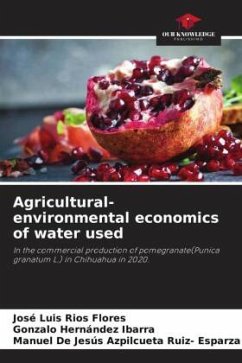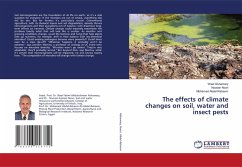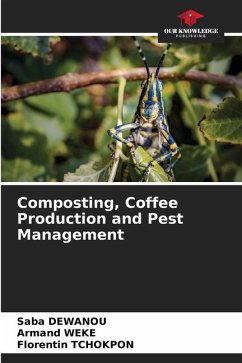
Productivity of water, soil, capital and labor
Chickpea(Ciser arietinum L.) cultivation in northwestern Mexico
Versandkostenfrei!
Versandfertig in 6-10 Tagen
29,99 €
inkl. MwSt.

PAYBACK Punkte
15 °P sammeln!
The objective was to determine the blue water footprint, by generating indicators of efficiency and physical, economic and social productivity per unit volume of water used in irrigation in the white chickpea crop irrigated with groundwater by pumping produced in three regions of northwestern Mexico (Comondú, BCS; Ahome, Sinaloa and Hermosillo, Sonora) and to contrast between them. The results indicate that the water footprint of white chickpea was 0.319 kg m-3 in Comondú, 0.519 kg m-3 in Ahome and 0.351 kg m-3 in Hermosillo. It was also found that the crop required an average of 2, 863 L kg...
The objective was to determine the blue water footprint, by generating indicators of efficiency and physical, economic and social productivity per unit volume of water used in irrigation in the white chickpea crop irrigated with groundwater by pumping produced in three regions of northwestern Mexico (Comondú, BCS; Ahome, Sinaloa and Hermosillo, Sonora) and to contrast between them. The results indicate that the water footprint of white chickpea was 0.319 kg m-3 in Comondú, 0.519 kg m-3 in Ahome and 0.351 kg m-3 in Hermosillo. It was also found that the crop required an average of 2, 863 L kg-1 of chickpea produced. The average profit per hectometer was US$-113,418.80 hm-3. On the other hand, the indicator that analyzes the social efficiency of water indicates that on average 6.55 jobs hm-3 were generated in the chickpea crop, ranging from 3.78 jobs hm-3 in Comondú, BCS to 8.20 jobs hm-3 in Hermosillo, Sonora, which indicates the social importance of the white chickpea crop. It isconcluded that the crop produced in Ahome, Sinaloa was more efficient in physical and economic terms by using less water to produce chickpea and economic income.












